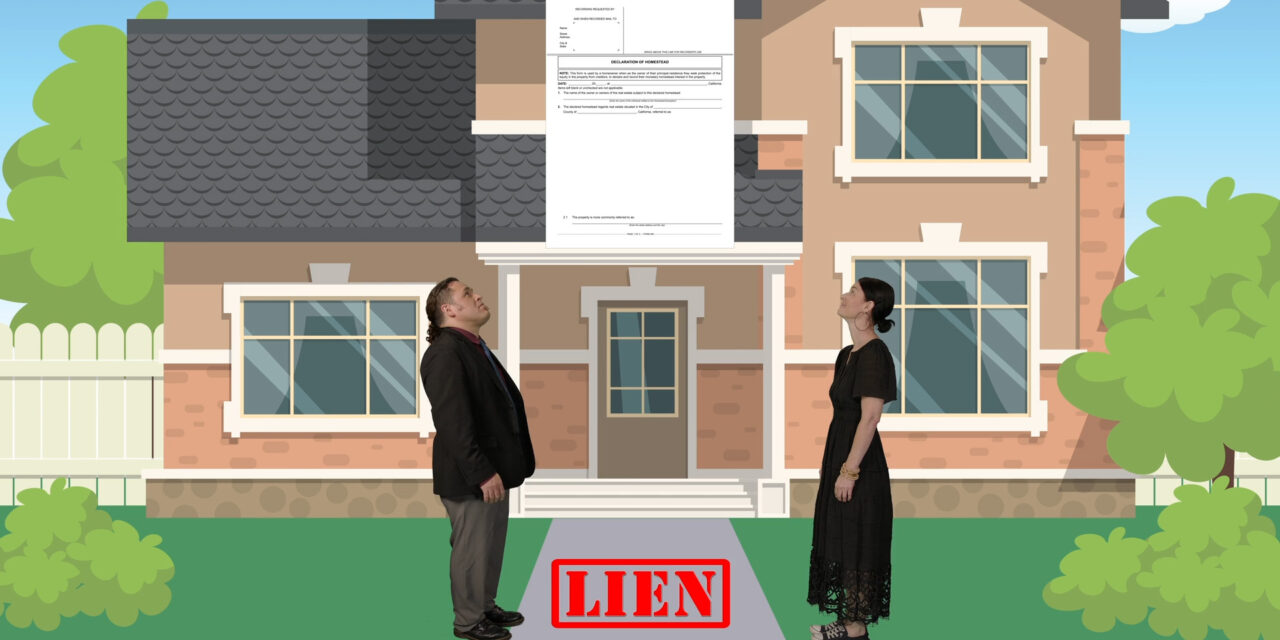This is the final episode of our new video series covering homestead protections.
Why this is important: In periods of economic recession, distressed owners will look to you for guidance about the specific mechanics of automatic and recorded homesteads – and you need to know the facts.
Authorization to collect on a money judgment
A judgment creditor with a recorded abstract of judgment always needs to first petition a court for authorization to sell a homesteaded property and collect on a money judgment. The court then determines whether the owner’s net sales equity in their home is a dollar amount greater than the amount of the owner’s homestead exemption.
When it is, the creditor may proceed to judicial foreclosure on their judgment lien by an execution sale. [Calif. Code of Civil Procedures §704.740(a)]
A home with a net equity less than the homestead amount leaves nothing for the creditor to sell and receive to apply to the debt owed under the judgment. However, the sale of a homesteaded dwelling can be forced by a creditor when a net equity exists beyond the amount of the homestead the homeowner holds in the property.
When the homeowner has not recorded a declaration of homestead on the property, they need to prove their residency in the dwelling qualifies the property for the automatic homestead exemption. [CCP §704.780(a)(1)]
Automatic homestead is a shield
A creditor may be permitted by the court to force the sale of the debtor’s home. However, the court will first exclude the dollar amount of the automatic homestead from the anticipated net sales proceeds to determine whether any funds remain to apply on the judgment. Here, the dollar amount of the homestead received by the homeowner on the sale is protected from the creditor’s attachment during a six-month reinvestment period following the sale.
Further, an automatic homestead exemption is provided on the replacement residence to protect the reinvested funds. [CCP §704.720(b)]
However, when the replacement home acquired is in the same county where the judgment lien is recorded, the lien will attach to the new residence (subject to the owner’s homestead exemption) the instant title is transferred into the homeowner’s name.
A homeowner who voluntarily sells their residence when title is subject to a creditor’s lien cannot use the automatic homestead exemption to protect the sales proceeds from being taken by the judgment creditor.
In contrast, a declaration of homestead recorded prior to the recording of the judgment lien allows the homeowner who voluntarily sells their home to first withdraw their homestead amount from the net sales proceeds before the judgment creditor receives any funds.
Although an insufficient net equity may exist barring the judgment creditor from forcing a sale of the home, the homeowner claiming only an automatic homestead exemption may not use a quiet title action to remove the lien and sell the home, unlike what is accomplished under a declared homestead.
Duration of a recorded homestead
Once recorded, a declaration of homestead lasts until:
- the homestead owner records a declaration of abandonment of the homestead; or
- the homestead owner records a new declaration of homestead on another residence. [CCP §§704.980, 704.990]
When a homeowner decides to sell their home which is subject to a declared homestead when title to their home has become clouded with a creditor’s lien, the homeowner may either:
- negotiate a release of the lien with the creditor; or
- clear title to the home through a quiet title action based on the priority of their declaration of homestead.
After title is cleared and the homeowner sells their property, they have six months to reinvest the homestead proceeds in another home. When the proceeds are reinvested in a new residence within six months, the new residence may then be declared a homestead by recording a new homestead declaration.
When the homeowner records a new homestead declaration on their replacement residence, the recording relates back to the time the prior homestead was recorded. [CCP §704.960]
Homestead equity exemption amounts are increased from time to time. When the amount changes after the creditor records their abstract of judgment, the amount of exemption, even on the new replacement residence, is the amount that was in effect when the abstract of judgment was recorded, not the later increased amount.
However, when the homeowner does not invest the proceeds of the sale in a new homestead within six months, and the proceeds are still in the State of California, the exempt proceeds from the sale can be attached by the judgment creditor.














